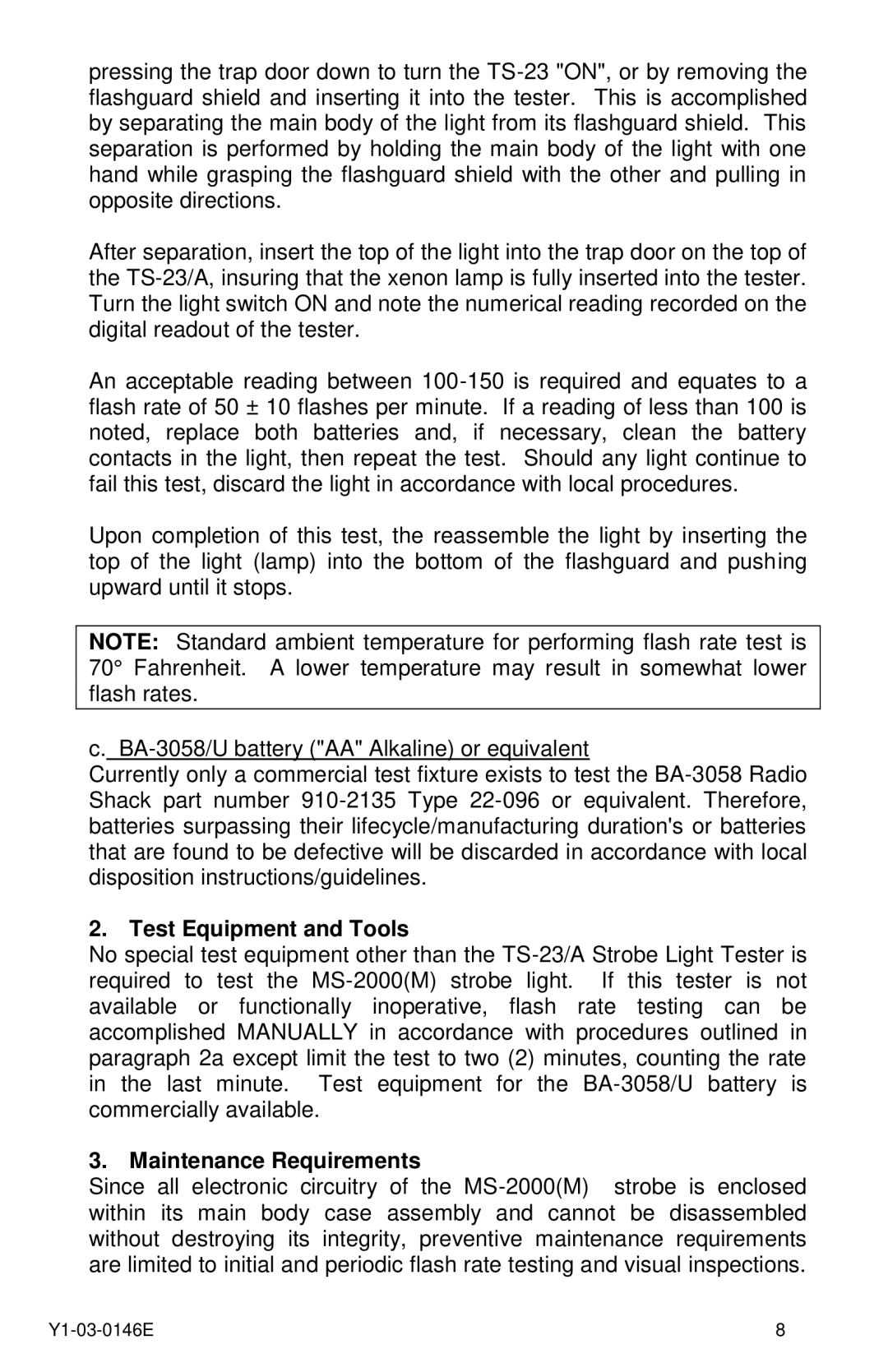MS-2000(M) specifications
The ACR Electronics MS-2000(M) is a state-of-the-art survival radio beacon designed to ensure the safety of individuals at sea and in remote locations. This device is a beacon that transmits distress signals to search and rescue (SAR) authorities, facilitating fast response times during emergencies. One of its standout features is its compliance with the international Cospas-Sarsat distress beacon standards, ensuring reliability and effectiveness for users worldwide.One of the main characteristics of the MS-2000(M) is its Dual Frequency capability. It transmits on 406 MHz and 121.5 MHz frequencies, allowing for long-range detection by satellites while still being picked up by conventional receivers during proximity searches. This dual capability significantly enhances the chances of a successful rescue.
The MS-2000(M) is designed to be both rugged and compact, weighing only 1.5 pounds and featuring an IP68 waterproof rating, which means it can withstand harsh marine environments. Its versatile design allows for easy attachment to life vests, lifeboats, or even personal carry bags, ensuring it is always accessible when needed. The unit also incorporates a built-in GPS, which provides accurate location data, further aiding SAR teams in pinpointing the exact position of the beacon.
Another significant technological advantage of the MS-2000(M) is its exceptional battery life. The device is equipped with a lithium battery that can last up to 48 hours in an activated state, ensuring prolonged transmission of distress signals. Additionally, the beacon features a self-test function, confirming that the unit is operational and ready for use at a moment's notice.
Moreover, the MS-2000(M) is designed with user-friendliness in mind. It includes a simple activation process that can be conducted even in high-stress situations, ensuring that individuals can send out distress signals promptly. The beacon is also compatible with various mounting options, providing users with flexibility depending on their specific needs.
Overall, the ACR Electronics MS-2000(M) is an essential piece of safety equipment for anyone who ventures into open waters or remote areas. Its advanced features, robustness, and reliable technology make it a trusted companion for sailors, adventurers, and aviation personnel alike. By investing in the MS-2000(M), users are equipping themselves with a powerful tool designed to save lives in emergency situations.

